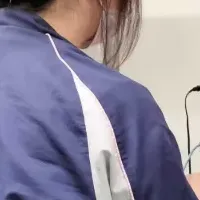
VESA Introduces Compliance Test Specification Model for Automotive DisplayPort Standards
VESA Unveils New Compliance Test Specification Model for Automotive DisplayPort Extensions
The Video Electronics Standards Association (VESA) has officially released a new Compliance Test Specification (CTS) software model intended for its DisplayPort Automotive Extensions (DP AE) specification. This significant update, made public on May 7, 2025, promises to enhance safety and security in automotive display technologies, a crucial requirement as vehicles increasingly adopt advanced technological features.
Overview of the Compliance Test Specification
The newly developed CTS is a fully executable Linux C-model that includes over 500 rigorous tests aimed at assessing functional safety and security compliance. This model allows silicon manufacturers to start creating and testing essential components needed to implement the VESA DP AE specification. These components include video source devices, bridges, and sinks necessary for automotive displays.
VESA's Automotive DisplayPort Extensions standard is an innovative framework designed to ensure complete automotive display functional safety and security while accommodating up to 16 distinct display regions. This is critical as modern vehicles are equipped with a growing number of high-resolution displays that provide vital information to drivers, facilitating safer and more efficient vehicle operation.
Enhancements in Functional Safety and Security
The DP AE specification, aligned with the latest DisplayPort (version 2.1a) and Embedded DisplayPort (eDP, version 1.5a), is crafted to support advanced functional safety (FuSa) protocols. Importantly, it fulfills the requirements for achieving ISO 26262 ASIL-D, which is the highest safety integrity level within automotive safety protocols. This standard establishes a solid foundation for automotive safety engineers, addressing the specific demands for safety integrity in vehicle display systems.
The specification is equipped to handle both compressed and uncompressed video signals, alongside Multi-Stream Transport capabilities for multiple display connections within a single DP source port. VESA's comprehensive approach to safety involves mandatory profiles that utilize high-safety cyclical redundancy check (CRC) signatures for each frame transmitted over the data pathway. This ensures data integrity, as it verifies that video frames are neither dropped nor duplicated, a vital aspect in capturing crucial driving data.
Showcase and Industry Implications
At the upcoming SID Display Week 2025 Expo, running from May 13-15 at the San Jose Convention Center, VESA will showcase FPGA platform demonstrations utilizing this new CTS C-model. Industry contributors, such as MediaTek, will highlight how they implement these innovations in real-world applications. This event will provide an excellent opportunity for stakeholders to witness first-hand the advancements being made within automotive display technologies.
James Goel, who leads the DisplayPort Automotive Extension initiative on behalf of VESA, emphasized the necessity of these developments. He stated, “The automotive industry requires advanced, safe, and secure display interfaces meeting ISO 26262 ASIL-D standards,” highlighting the critical role VESA's new specifications play in shaping the future of vehicle technologies.
Moreover, BTA Design Services, another key player in the industry, has expressed its excitement about contributing to the development of the DP AE Compliance Test Specification. They are set to launch an early version of their DP AE IP in Q2 2025, which is designed for compliance with the upcoming autosilicon deployment in Q4 2025.
For more detailed information regarding the VESA DisplayPort Automotive Extensions specification and its implications for the industry, interested parties can visit their website at www.displayport.org/automotive.
Conclusion
As vehicles continue to evolve into sophisticated platforms for technology, the innovation brought forth by VESA with its CTS model will significantly impact automotive safety and operational efficiency. By advancing the standards for display systems, VESA not only supports the automotive industry’s safety needs but also fosters broader technological enhancements within the sector. Stakeholders are urged to participate in the validation processes to keep pace with these rapid advancements and integrate such cutting-edge display technologies into their future vehicle platforms.
Topics Consumer Technology)










【About Using Articles】
You can freely use the title and article content by linking to the page where the article is posted.
※ Images cannot be used.
【About Links】
Links are free to use.